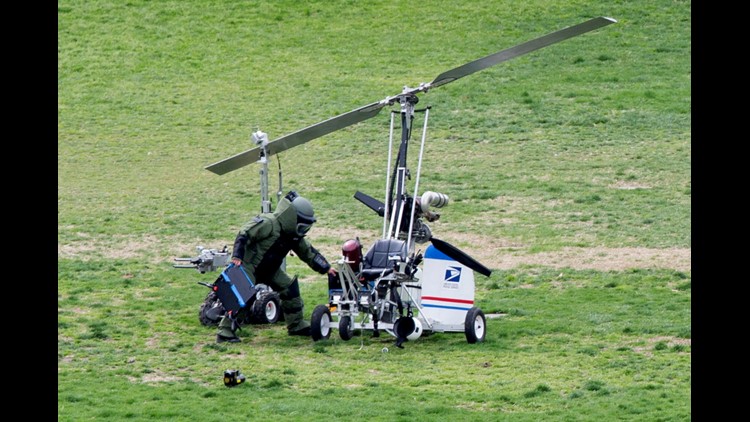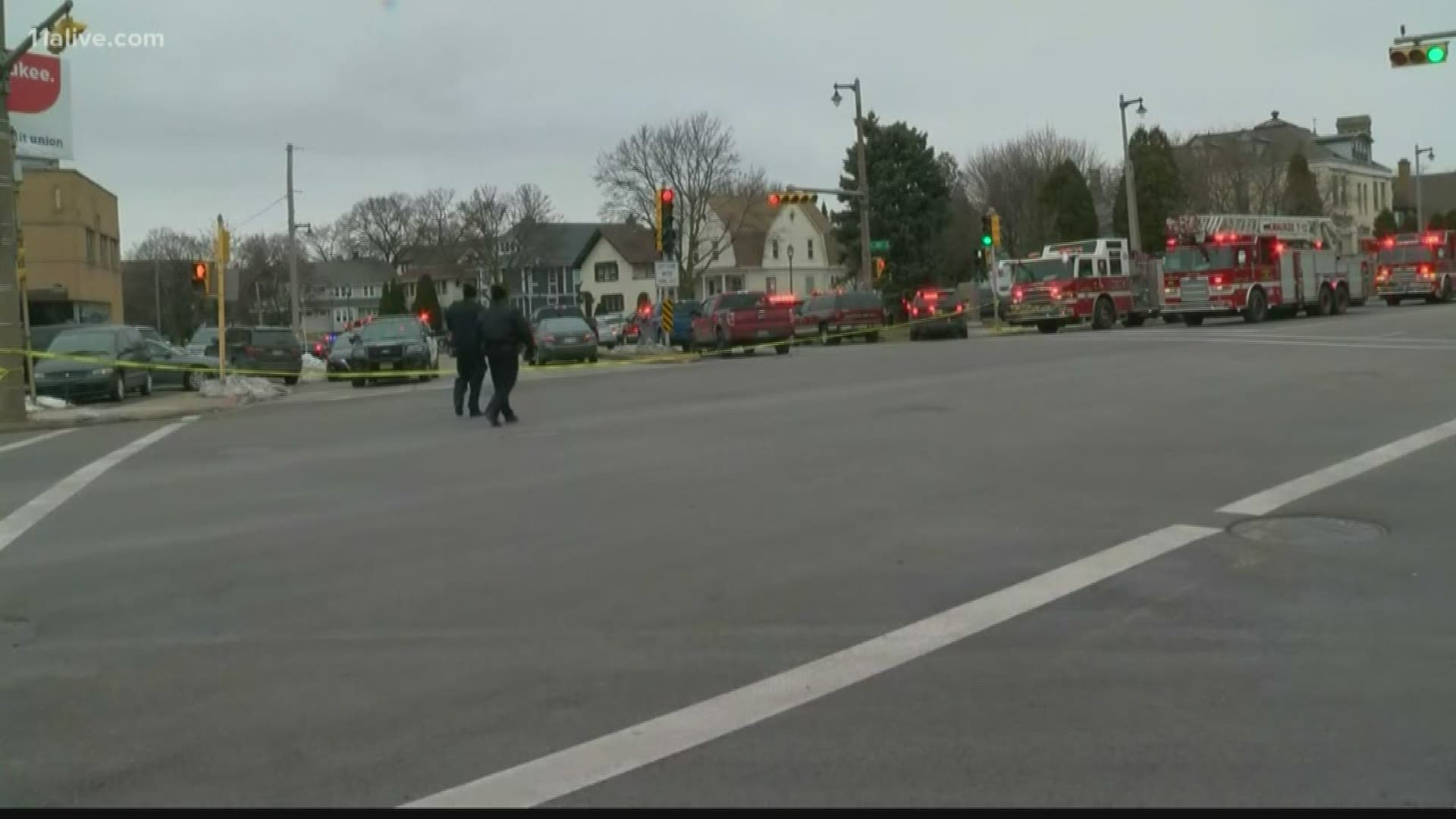WASHINGTON, D.C. -- The Florida postal worker who landed a gyrocopter on the grounds of the U.S. Capitol in April to call attention to government corruption pleaded guilty Friday to flying without a license.
Douglas Hughes, 62, initially faced six criminal charges and nearly 10 years in prison for flying the one-person helicopter down the National Mall before landing at the Capitol on April 15.
He pleaded guilty to flying without an airman's certificate, a felony carrying a maximum three years in prison and $250,000 fine, for altering the aircraft to be heavy enough and travel far enough for the FAA to require a pilot's license. Hughes also agreed to forfeit the aircraft to the government as part of the plea deal.
U.S. District Court Judge Colleen Kollar-Kotelly scheduled sentencing for April 13, 2016, which is nearly a year to the day after his flight. She said the government agreed to cap its sentencing request at 10 months, but she will be free to set any term up to three years because the case is so unusual.
An open question is whether Hughes will be allowed to participate in a march for campaign-finance reform from Philadelphia to Washington from April 2 to 11 and speak at a rally in the capital. Hughes has been confined to Hillsborough County, Fla., since his flight and would need government permission to participate.
Prosecutors said the march could include civil disobedience, which would violate Hughes' pretrial release if he were involved.
"This court could be turned into a circus," Assistant U.S. Attorney Tejpal Chawla said.
But Tony Miles, a federal public defender, said Hughes wouldn't break the law and said prosecutors couldn't stifle Hughes' rights to protest the cause that landed him in federal court.
Kollar-Kotelly said she wanted to learn more about the march and rally organized by a group called 99 Rise before deciding whether to allow Hughes to participate.
"Frankly, I do have some concerns," she said.
Hughes made the flight from Gettysburg, Pa., to draw attention to the streams of money fueling U.S. elections. He flew a gyrocopter that he modified with containers carrying letters to every member of Congress and a 10-gallon tank of gas rather than the standard 5 gallons. He also placed a U.S. Postal Service logo on the aircraft.
Hughes said at the plea hearing that he intended for the Postal Service to deliver the stamped letters after he arrived. He said the government still has the letters and the aircraft.
Hughes initially faced charges of flying without an airman's certificate, operating an unregistered aircraft, flying in restricted national-defense airspace without a flight plan and labeling a vehicle falsely as part of the Postal Service. He pleaded guilty only to failing to have a pilot's license, which the FAA required because his modifications made the aircraft weigh more than 254 pounds and because of the larger gas tank, Chawla said.
"If you make those two modifications, you are required to have a pilot's license," he said.
Hughes acknowledged he was aware of the FAA's requirements and flight restrictions around the capital.
"I find the statement of facts is complete and correct," Hughes said, before replying he "absolutely" was pleading guilty to the charge.
Kollar-Kotelly noted that by pleading guilty to a felony, Hughes could lose his rights to vote, hold public office, serve on a jury or possess a firearm. She said sentencing guidelines for trespassing suggested a sentence of zero to six months for someone with his background, but that trespassing wasn't really analogous to what he did.
"This is an unusual case," she said.
Besides focusing on campaign-finance, the flight exposed vulnerabilities in security around some of the most heavily defended property in the country.
Hughes was seen flying about 100 feet off the ground along the National Mall from the Washington Monument before landing on the Capitol's West Front lawn, according to Kathryn Rivera, a U.S. Capitol Police officer. The area is a no-fly zone, she said.
At a congressional hearing in April, military and civilian authorities said they were developing plans to better track and defend against small, slow-moving aircraft like Hughes was flying.



